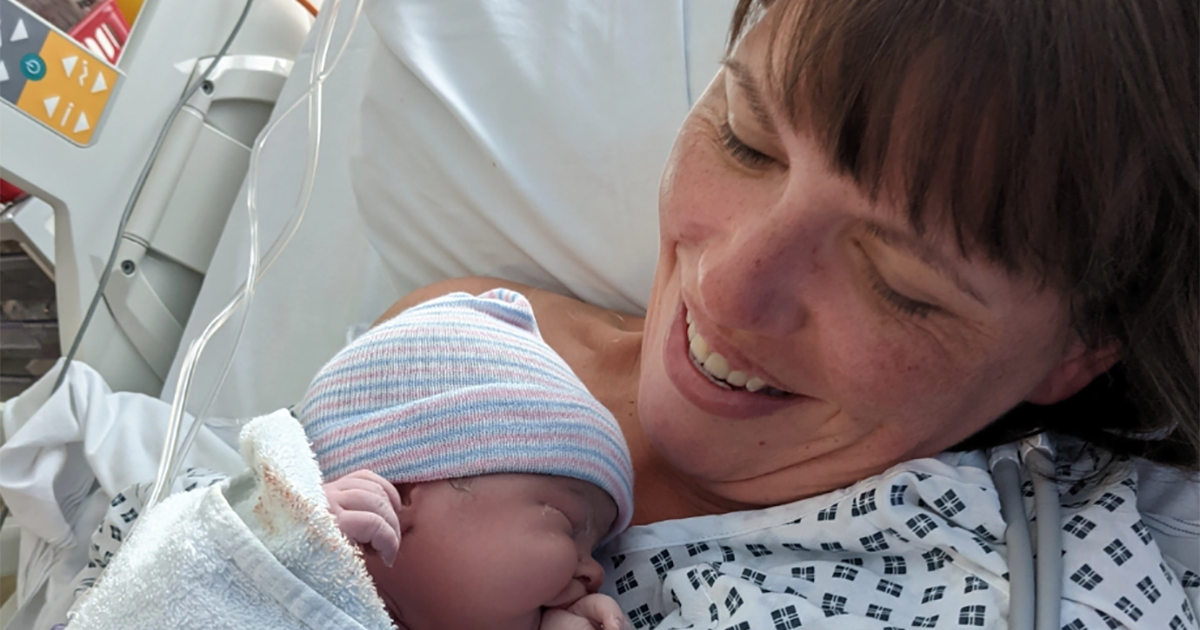Understanding Glioblastoma
- A 39-year-old mother chose to give birth to her second child in October rather than terminate the pregnancy amid her brain diagnosis.
- Glioblastoma has been called the "perfect storm of cancer," and it is the most common brain tumor in adults.
- For glioblastoma, there is an option for patients that may extend survival time Optune. The FDA approved this treatment in October 2015; it is available to adults 22 years of age or older.
Catherine Reeve, 39, tells The Sun that for her, she made the right decision in having another child, Skye, and giving her 8-year-old daughter Rose a sibling something Rose has always longed for.
Read MoreCatherine's Impossible Decision
It was Valentine's Day 2021 when Catherine found out she was pregnant with little Skye.
"When we told Rose I was pregnant and that she was going to have a little brother or sister, her little face just lit up," Catherine recalls. "She said she wanted a sister because baby boys are smelly!"
Catherine continued taking her epilepsy medication during her pregnancy, so once Skye was born, she had to stay in the hospital for two days to make sure the medication did not affect her. But once she was finally discharged, they went to surprise big sister Rose, who was already wearing her "I'm a big sister" T-shirt.

"It was very emotional and there were a lot of tears," Catherine says, adding that she plans to live in the moment with her girls, as she has no idea how long she will have with them.
Skye was born via elective C-section on Oct. 15, 2021, weighing 7 pounds and 5 ounces. Since the birth, Catherine says she definitely has had some "dark moments."
"There is an element of guilt as I have brought another child into the world in the knowledge I won't live to see them grow up, and will leave them without a mother," she says.
"I don't know how long I'm going to be around for and I have my dark moments thinking about that," she adds, "but I try not to dwell on it because if I'm consumed with fear about the future, I can't enjoy the precious time we have now."
Catherine says her doctor has advised her that they are "95% certain" her tumor did not grow during her pregnancy, but they want to do an MRI with contrast to make sure. (She had two stable MRI scans during her pregnancy, but they were unable to use contrast dye.)
Understanding Glioblastoma
Glioblastoma has been called the "perfect storm of cancer," and it is the most common brain tumor in adults; glioblastoma brain cancer accounts for about 15% of all brain tumors and usually occurs in adults between the ages of 45 and 70 years.
It grows rather quickly and is located in the brain, the most protected part of the body. This means that surgery should be performed swiftly; there are few drugs that can even reach the tumor, given the impenetrable blood-brain barrier.
The cells of glioblastoma cancer are also heterogeneous each cell must be individually targeted to slow tumor growth. On top of all that, surgery often cannot remove all of the cancer because of the way the tumor burrows into a person's brain, so the tumor starts to grow again immediately after surgery.
Brain Cancer Treatment
Brain cancer treatment has come a long way over the past few decades, but there is still a lot more work to be done. However, there is one exciting development in the field that could be a game-changer for those battling brain cancer or dealing with tumors.
Fighting Brain Cancer With Electric Fields
For glioblastoma, there is an option for patients that may extend survival time Optune. The U.S. Food and Drug Administration approved this treatment in October 2015; it is available to adults 22 years of age or older.
This tumor-treating therapy comes in the form of a cap that attaches to a patient's head, where electric currents run through adhesive pads. These currents disrupt the division of cancer cells, which can delay the disease from progressing and thus extend the survival time for some patients.
"I just want to emphasize to patients that when I first started doing this in 1999, there were maybe less than 5 percent of patients with this disease that were alive two years," Dr. Suriya Jeyapalan, a neuro-oncologist at Tufts Medical Center, tells SurvivorNet during a previous interview.
"Now we're getting out to maybe a third of patients alive at five years. This is not your father's brain tumor, and I want to sort of give a message of hope to patients. In the future we'll add to these treatments and make it even better."
Learn more about SurvivorNet's rigorous medical review process.


